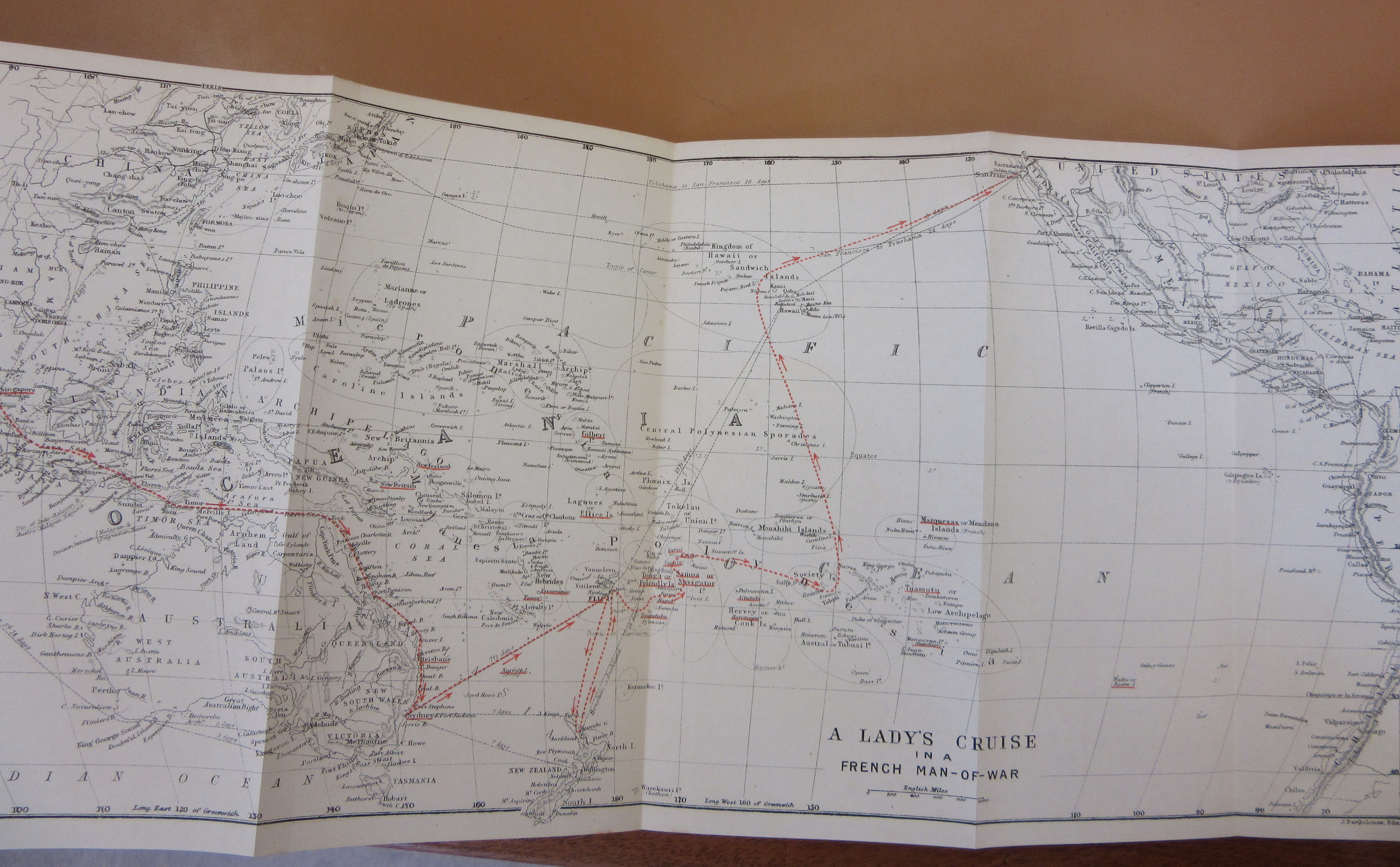 The Map Room recently acquired an intriguing map entitled ‘A lady’s cruise in a French Man-of-War.’ It shows a route beginning on the Malay Peninsula, which goes southeast through what is now part of Indonesia, to the coasts of Australia and New Zealand, and across the Pacific Ocean calling at many islands including Tonga and Hawaii, eventually ending up in California. The map was produced to accompany a book of the same title, in which Constance Gordon-Cumming gives an account of her travels in 1877 accompanying the Bishop of Samoa across his extensive diocese.
The Map Room recently acquired an intriguing map entitled ‘A lady’s cruise in a French Man-of-War.’ It shows a route beginning on the Malay Peninsula, which goes southeast through what is now part of Indonesia, to the coasts of Australia and New Zealand, and across the Pacific Ocean calling at many islands including Tonga and Hawaii, eventually ending up in California. The map was produced to accompany a book of the same title, in which Constance Gordon-Cumming gives an account of her travels in 1877 accompanying the Bishop of Samoa across his extensive diocese.
Constance Gordon-Cumming travelled widely throughout her adult life and published many works about her journeys, illustrated with reproductions of her accomplished watercolours. Titles include ‘At home in Fiji,’ ”Two happy years in Ceylon,’ and ‘Granite crags of California.’ She spent time with various bishops, the first governor of Fiji, and with General Ulysses Grant and his wife. Wealthy, well-connected, unmarried and independent, she appears to have had an unusually good time for a woman of her generation.
This particular work includes many observations on the societies she visited; their activities, traditions, homes and beliefs. When describing the animal worship of the Pacific islanders she shows a surprising degree of empathy, drawing parallels with the animal worship of the Anglo-Saxons still revealed in ancient English place names and in features such as the White Horse of Wantage. She criticises the massive international trading company Godeffroy of Hamburg: in Samoa their employees were encouraged to cohabit with female companions from the local community who they were strictly forbidden to marry, and were also advised to obstruct and exclude all missionaries. Throughout the book Gordon-Cumming describes the landscapes, the individuals she meets, the pleasures and privations; the book is really a succession of anecdotes, but an informative and good-humoured one. 
Maps and accounts like this, describing the route of a traveller, are not uncommon; the fact that the traveller in question was female makes this book more unusual. Although the title of the map and book refer clearly to ‘A lady’ as the subject (uniquely amongst her works), Gordon-Cumming’s name appears only as ‘C.F. Gordon-Cumming’ on the cover and title page, without a title or full name which would make her sex obvious; without looking closely one would conclude that the writer was a man. Possibly this was deliberate to make her books marketable; J.K. Rowling had a similar experience far more recently, a fact which is worth remembering this International Women’s Day.
